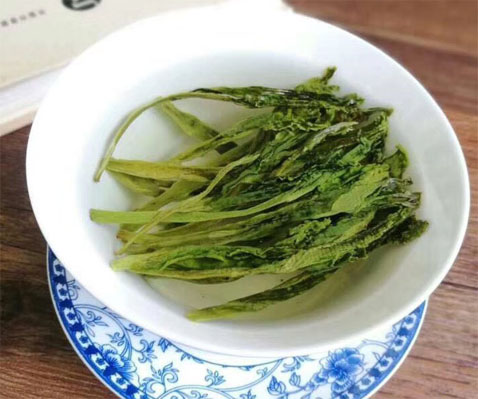Please login to See Price
Tea prices and quantities are per kg (2.2lb) unless otherwise indicated
Harvest Date: Late April
Growing Region: Huangshan, Anhui
Elevation: 660m (2,165 ft)
Tea Bush/Varietal: Shi Da Cha
Farming Methods: Natural farming
Production Methods: Tea Plucking-Frying- Pressing and make shape-Baking
Other Notes:
Tai Ping Hou Kui is one of the Chinese Top Ten Famous Teas. It is one of the few Chinese green teas which are made by grown tea leaves, instead of the tender tea buds and leaves. It is produced in the Taiping County of Anhui. (In 1983, Taiping County was changed to the present name of Huangshan District). Tai Ping Hou Kui was first discovered/created in the early 1900s. At that time most of the tea business was happening in the nearby cities of Shanghai, Nanjing and Yangzhou. Consumers were demanding high quality green tea and tea farmer Wang Kui Cheng 王魁成 (nicknamed Wang Lao Er) who lived in Monkey Hill (Hou Gang 猴岗) of Taiping was a very smart and experienced tea maker. He decided to use this high-quality tea leaf and a special refining processing to produce a batch of premium green tea to meet the demands of his customers from the big cities. He selected tea leaf from the highest elevation tea garden in Monkey Hill called Phoenix Peak (Feng Huang Jian 凤凰尖) with an altitude of 750m (2,460ft). He asked his men to pluck the tender long shoots – carefully picking one bud three leaves. He used all his talented tea making skills to process the tea and the result was a truly exceptional tea.. His customers called this tea Wang Lao Er Kui Jian, which means Wang Lao Er is the champion (In Chinese, Kui 魁 means the top champion. And the same word/character “Kui” happened to be in his original name. Later, because the main locations where this tea was grown were Monkey Hill (Hou Gang) and Monkey Hole (Hou Keng) and the inventor’s name has the word/character Kui, the tea was formerly named as Tai Ping Hou Kui. (It was not because that the tea was plucked by monkeys as the legendary story tells).

Hou Gang (Monkey Hill) And Feng Huang Jian (Phoenix Peak)
In 1915, the Tai Ping Hou Kui attended the World Expo held in Panama. It was awarded as Gold Prize for its outstanding quality. Even though the Tai Ping Hou Kui had been famous in both China domestic and overseas markets, its production had remained low compared to other famous Chinese teas. These records show the annual production quantities.
1935 – 500Kg
1949 – 95Kg (The Chinese Civil War in 1945-1949 seriously affected production)
1955 – 500Kg
1979 – 500Kg
1987 – 1,000Kg
1999 – 1,500Kg
2003 – 12,600Kg (In this year, the Tai Ping Hou Kui tea production was expanded throughout all Taiping County, rather than Hou Gang and Hou Keng Villages only).
Today Tai Ping Hou Kui tea annual production is still very low compared to the other Top Ten Chinese Famous Teas. There are three main factors contributing to this.
- The tea leaf must be made from the Shidacha cultivar. This tea cultivar is grown primarily in Taiping Area and very few other tea growing regions use this cultivar.
- The Tai Ping region and it’s unique climatic conditions seems to be one of the only areas where the tea plants can retain exceptional tenderness during the growth of the green shoots, so that the tea can be harvested and processed even when there is one bud three leaves.
- The farmers and tea makers in Tai Ping have mastered the unique way of processing Tai Ping Hou Kui and have kept it somewhat of a secret over the years.
Tai Ping Hou Kui is one of the most highly esteemed and prized teas in China and is often presented by Chinese leaders as national gifts to the presidents of foreign countries.
The Processing of Tai Ping Hou Kui
Tai Ping Hou Kui uses the tender one bud three leaves from Shidacha cultivar tea plant. Harvesting usually starts after the middle of April.
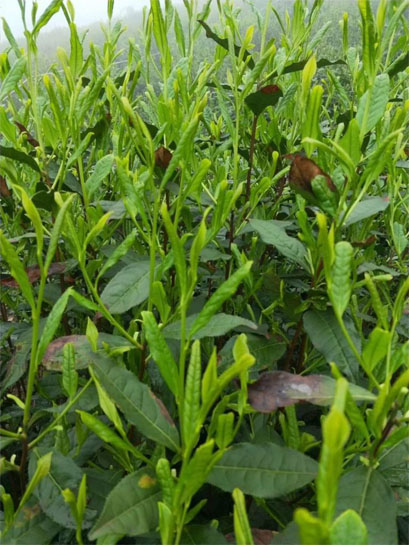
After the tea leaves are harvested, they are carefully sorted by hand before processing.
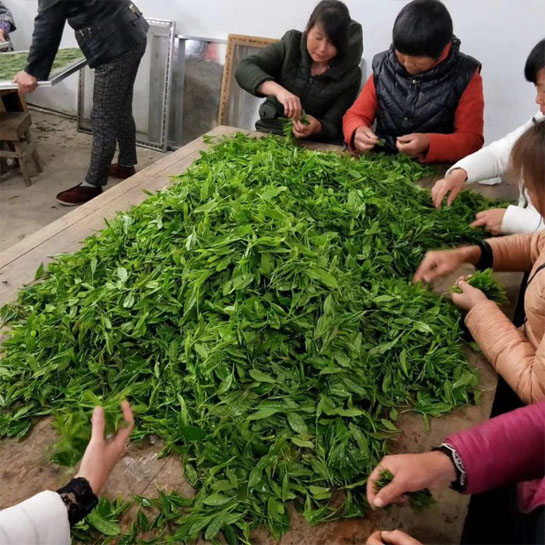
The tea leaves are then spread out for withering. Slight dehydration (water loss) is necessary at this time to help give its unique fragrance and to reduce astringency.
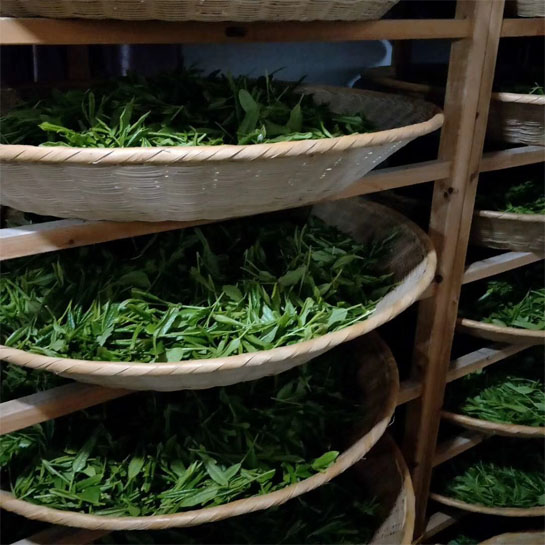
The tea is then fried (Shaqing, Killing). The temperature in the pans is quite high which kills the enzymes in the tea leaves.
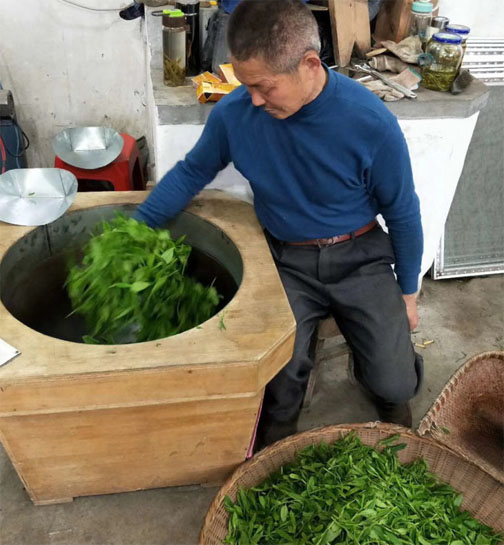
After frying, the leaves are transferred by hand, one by one, into wooden plates where they are covered with a cotton cloth and gently hand pressed. The pressing is what creates the unique flat straight tea body of Tai Ping Hou Kui.
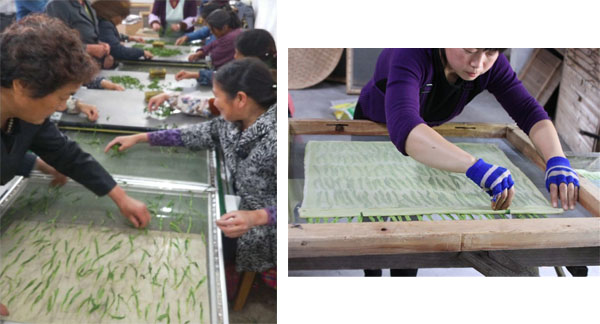
After the tea is pressed, it is placed into wooden trays for baking and drying. Charcoal is burned in the bottom of the wooden box to provide the heat for baking. There are usually several tiers of trays and the position of the trays will be changed in sequence to ensure the tea is baked evenly.
The baking is separated into three steps, Primary Baking (初烘), Second Baking (复烘) and Final Baking (老火). As the baking processing continues, the temperature is gradually lowered. And there are carefully managed intervals in between these 3 steps to make sure the tea sufficiently recovers and overheating is avoided. The moisture content in the tea leaves is also carefully managed during this process ensuring that it is evenly distributed, and the drying and baking process causes the best effect possible.
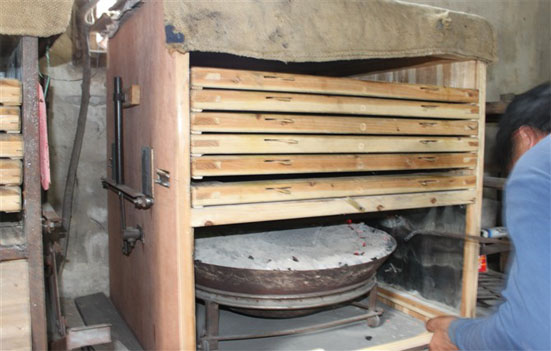
After the baking process is complete and the tea reaches degree of dryness required, it is packed into a container while it is still warm. In the traditional Chinese way of packing, lime is put in the bottom of the container and a layer of indicalamus leaf (a type of broad bamboo leaf) is added in the container. Indicalamus Leaf is a very good Chinese traditional packing material. It is natural, clean and has neutral, modestly fragrant aroma. It can help enhance the flavor of the tea. As an old Chinese saying goes “Tea is grass, Indicalamus Leaf is treasure” (Indicalamus Leaf is also the packing of the famous Chinese Rice Dumplings).
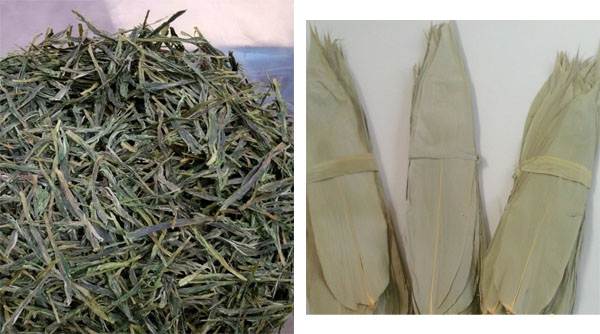
How Does Tai Ping Hou Kui Tea Taste?
It has charming orchid flavor that pleasantly lingers in the mouth and throat. The taste is brisk and mellow. And the aftertaste is deep.
What are the differences between genuine and fake Tai Ping Hou Kui?
- The tea body of genuine Tai Ping Hou Kui is thick, long and heavy and the color is a rich, dark green. Whereas the tea body of most non-genuine and Tai Ping Hou Kui is more slim – like flat paper, and shorter and the color is yellowish green. As genuine Tai Ping Hou Kui tea plants keep their shoots soft and tender throughout the Spring, they grow long and thick. Also, the save on costs, the fake Tai Ping Hou Kui is generally processed by machine, which presses the tea leaves tightly, causing them to be slimmer and flatter.
- The genuine Tai Ping Hou Kui flavor is stronger and has a more natural orchid flowery presence and a lingering aftertaste, whereas with the flavor of the non-genuine tea you may notice a slight burnt or smoky aroma due to less refined processing. The aftertaste is usually paler due to the inferior tea leaf sourced.
- Usually there are cloth marks evident on the tea body of genuine Tai Ping Hou Kui, whereas there is no such cloth mark on fake Tai Ping Hou Kui as it pressed by machine without a cotton cloth cover.
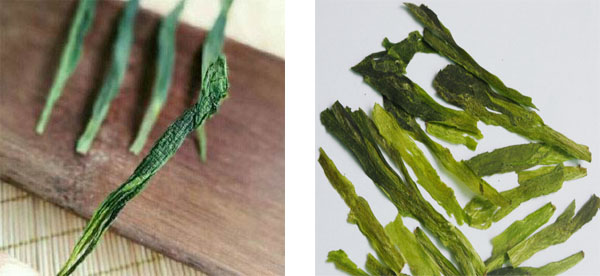
Dry Leaf
Color: Yellowish green
Shape/size: Loose leaf, flat straight
Brewed Tea
Color: Green
Aroma: Orchid flowery
Body Taste: Mellow sweet
Suggested Brewing (adjust according to personal preferences)
Water Temperature: 85°C/185°F
Amount: 3g per 150ml teacup
Steeping Time: 1-2 minutes
# of Infusions: 2-3 infusions
Dry Leaf
Color: Yellowish green
Shape/size: Loose leaf, flat straight
Brewed Tea
Color: Green
Aroma: Orchid flowery
Body Taste: Mellow sweet
Suggested Brewing (adjust according to personal preferences)
Water Temperature: 85°C/185°F
Amount: 3g per 150ml teacup
Steeping Time: 1-2 minutes
# of Infusions: 2-3 infusions
| Weight | 1 kg |
|---|








